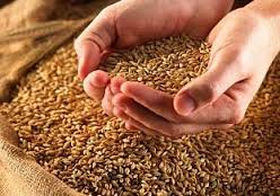Agriculture, Baltic Export, Estonia, Financial Services, Foodstuff, Markets and Companies
International Internet Magazine. Baltic States news & analytics
Friday, 19.04.2024, 20:09
Estonia's agricultural exports fall 8% on year in 2016
 Print version
Print version |
|---|
"Exports fell against a reference base that was low anyway. Considering that export prices of farming products returned to rise again last year, the real volume of exports probably decreased even more," head of the Rural Affairs Ministry's trade and agro-food department Taavi Kand said.
The structure of food sector exports was characterized by the continued domination of low value added and unprocessed products, Kand added.
Estonia exported 1.1 bln euros' worth of agricultural and food products last year, including 778 mln euros in food products of Estonian origin. Re-export, that is, the exportation of goods imported from a foreign country, accounted for 28% of agricultural exports, it appears from the ministry's overview of agricultural and food sector trade in 2016.
The biggest increases were recorded in the export of raw milk, dried fruits and nuts, and dried peas, which grew by 11 mln, 5.9 mln and 4.9 mln euros, respectively. By countries of destination, export to Latvia grew by 6.6 mln euros mostly on the back of raw milk. Barley boosted export to Tunisia by 3.8 mln euros and increased wheat consignments lifted export to the UK by 3.4 mln euros.
Overall, the export of soft wheat fell by 27 mln euros. Substantial decreases occurred also in the export of frozen Atlantic salmon and concentrated milk, which declined by respectively 18.5 mln and 16.7 mln euros.
"A comparison of the last two years' target markets and export commodities reflects two major problems of Estonian food sector exports – first, exporting companies' heavy dependence on a few target markets, and secondly, the small number of export driving products," Kand said. "To ensure growth of export and existence of stable trading partners, Estonia must change from a raw material exporting country into one that exports products with higher added value."








 «The Baltic Course» Is Sold and Stays in Business!
«The Baltic Course» Is Sold and Stays in Business!

